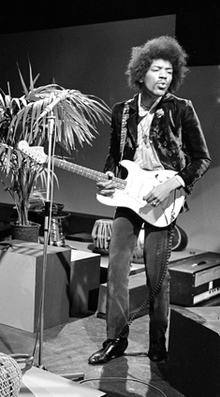
Back Geraas in musiek Afrikaans Ruido en la música Spanish Müra (muusika) Estonian Støy i musikk NN இசையில் இரைச்சல் Tamil


In music, "noise" has been variously described as unpitched, indeterminate, uncontrolled, convoluted, unmelodic, loud, otherwise unmusical, or unwanted sound, or simply as sound in general. The exact definition is often a matter of both cultural norms and personal tastes. Noise is an important component of the sound of the human voice and all musical instruments, particularly in unpitched percussion instruments and electric guitars (using distortion). Electronic instruments create various colours of noise. Traditional uses of noise are unrestricted, using all the frequencies associated with pitch and timbre, such as the white noise component of a drum roll on a snare drum, or the transients present in the prefix of the sounds of some organ pipes.
The influence of modernism in the early 20th century lead composers such as Edgard Varèse to explore the use of noise-based sonorities in an orchestral setting. In the same period the Italian Futurist Luigi Russolo created a "noise orchestra" using instruments he called intonarumori. Later in the 20th century the term noise music came to refer to works consisting primarily of noise-based sound.
In more general usage, noise is any unwanted sound or signal. In this sense, even sounds that would be perceived as musically ordinary in another context become noise if they interfere with the reception of a message desired by the receiver.[1] Prevention and reduction of unwanted sound, from tape hiss to squeaking bass drum pedals, is important in many musical pursuits, but noise is also used creatively in many ways, and in some way in nearly all genres.
- ^ Attali 1985, 27.
© MMXXIII Rich X Search. We shall prevail. All rights reserved. Rich X Search